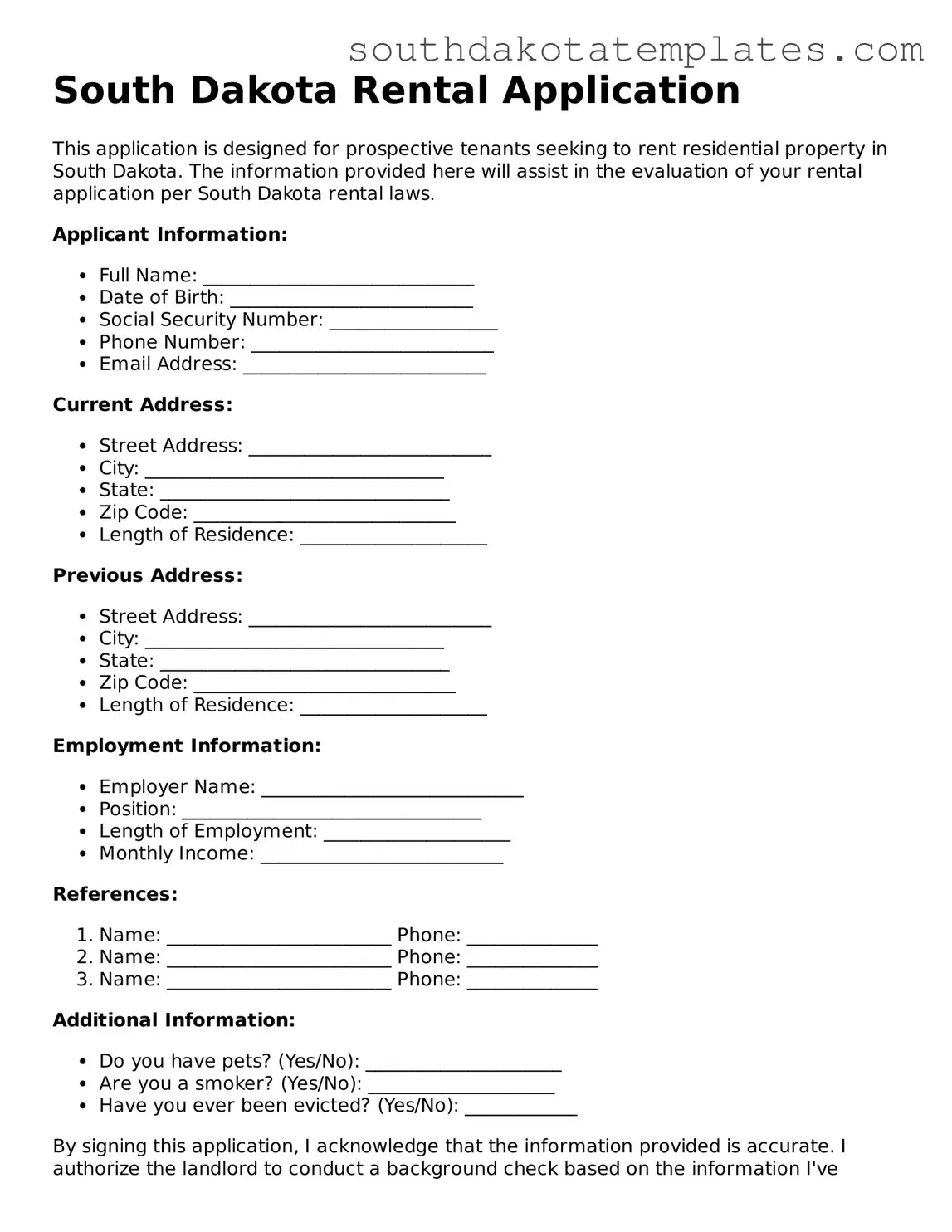When seeking a new place to call home in South Dakota, potential tenants often encounter the rental application form, a vital document that plays a significant role in the leasing process. This form serves as a comprehensive tool for landlords to assess the suitability of applicants, gathering essential information such as personal details, employment history, and financial stability. Typically, it includes sections for contact information, rental history, and references, allowing landlords to verify an applicant's background and reliability. Additionally, many forms require consent for credit and background checks, ensuring that the landlord can make informed decisions based on the applicant's financial behavior and history. Understanding the nuances of this application process is crucial for both tenants and landlords alike, as it sets the foundation for a successful rental relationship. With the right preparation and knowledge, applicants can navigate this process with confidence, while landlords can find trustworthy tenants who meet their criteria.
